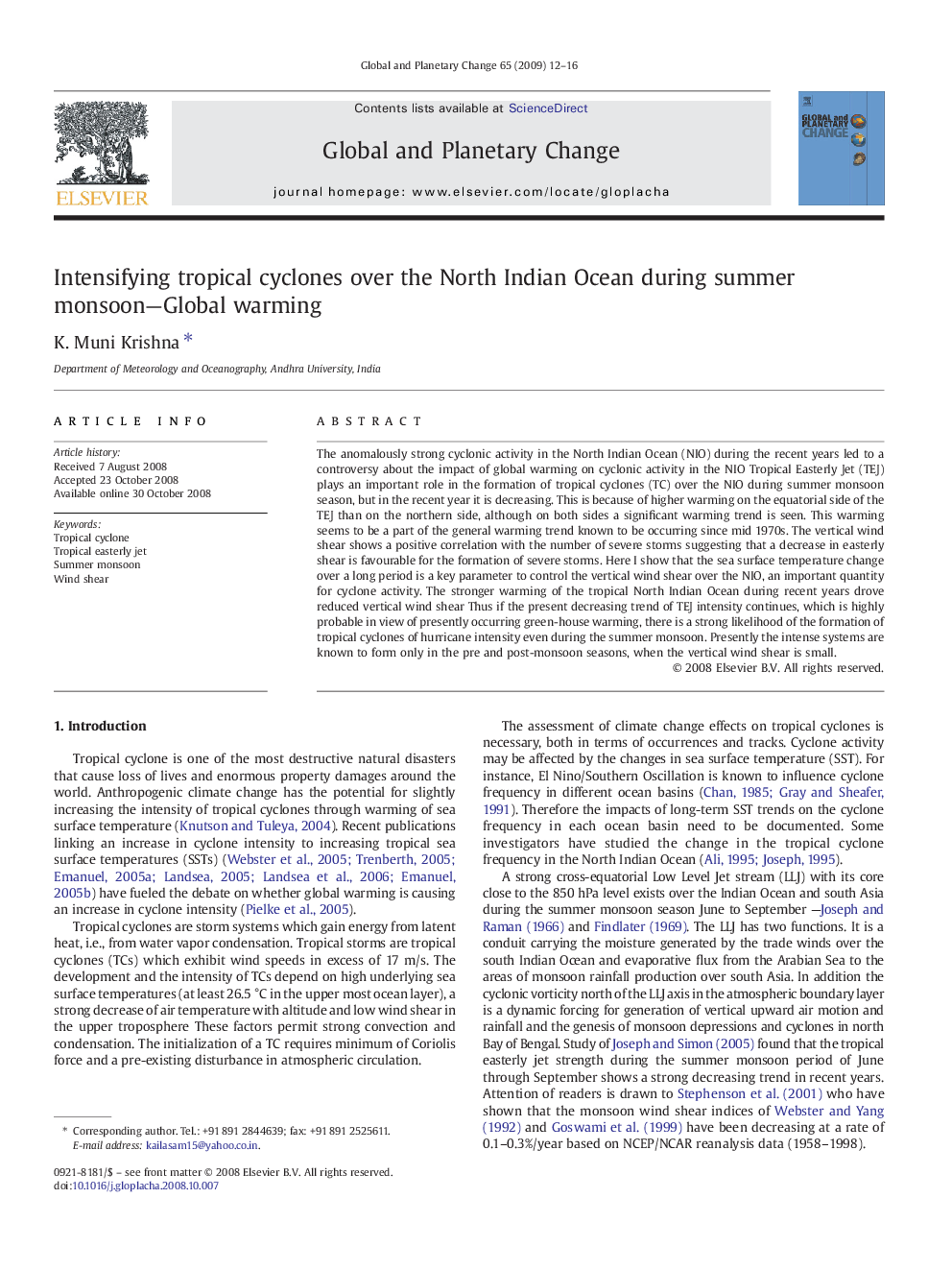| Article ID | Journal | Published Year | Pages | File Type |
|---|---|---|---|---|
| 4464106 | Global and Planetary Change | 2009 | 5 Pages |
The anomalously strong cyclonic activity in the North Indian Ocean (NIO) during the recent years led to a controversy about the impact of global warming on cyclonic activity in the NIO Tropical Easterly Jet (TEJ) plays an important role in the formation of tropical cyclones (TC) over the NIO during summer monsoon season, but in the recent year it is decreasing. This is because of higher warming on the equatorial side of the TEJ than on the northern side, although on both sides a significant warming trend is seen. This warming seems to be a part of the general warming trend known to be occurring since mid 1970s. The vertical wind shear shows a positive correlation with the number of severe storms suggesting that a decrease in easterly shear is favourable for the formation of severe storms. Here I show that the sea surface temperature change over a long period is a key parameter to control the vertical wind shear over the NIO, an important quantity for cyclone activity. The stronger warming of the tropical North Indian Ocean during recent years drove reduced vertical wind shear Thus if the present decreasing trend of TEJ intensity continues, which is highly probable in view of presently occurring green-house warming, there is a strong likelihood of the formation of tropical cyclones of hurricane intensity even during the summer monsoon. Presently the intense systems are known to form only in the pre and post-monsoon seasons, when the vertical wind shear is small.
